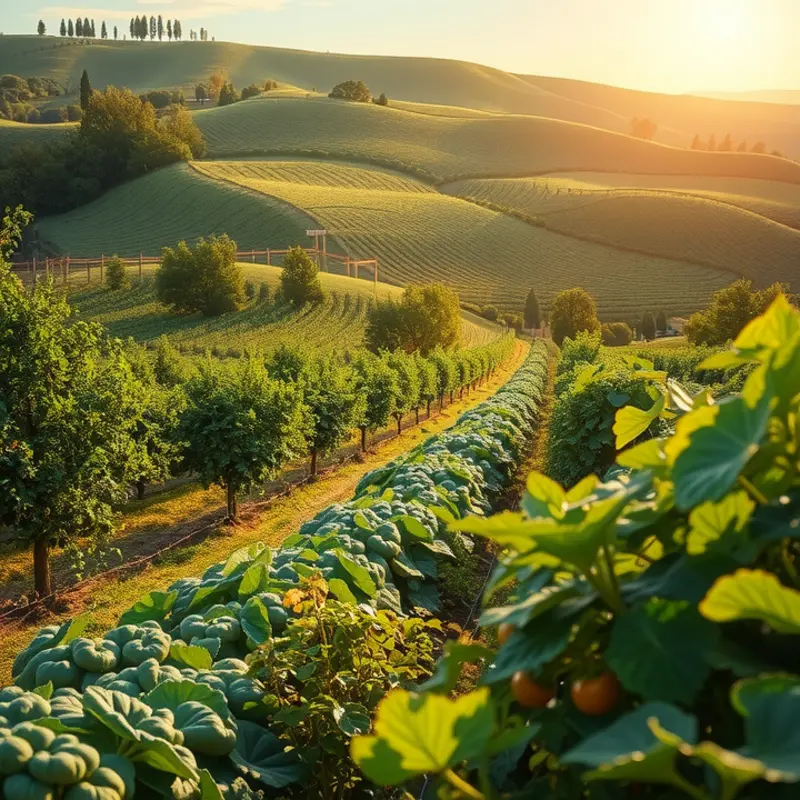Italy is a culinary treasure trove where each region boasts its own unique dishes, deeply rooted in local traditions and ingredients. From the savory pastas of Emilia-Romagna to the fresh seafood of Sicily, Italian food is a reflection of its diverse landscapes and rich cultural history. Embark on a flavorful journey to explore regional Italian dishes that bring together local produce, cooking techniques, and time-honored recipes. Each dish tells a story and invites you to savor the essence of Italy’s vibrant food culture.
Pasta Perfection: The Heart of Emilia-Romagna

Emilia-Romagna, cradled in Italy’s lush northern landscape, is revered as the heartland of quintessential Italian pasta dishes. Its culinary roots run deep, intertwining with the rich history and regional pride that permeates every corner of the region. Here, the love for pasta is palpable, and the art of pasta-making holds a revered place in both homes and restaurants.
Among the most celebrated dishes is Tagliatelle al Ragù, a symphony of flavors that epitomizes the region’s passion for culinary excellence. This dish is a delicate dance of freshly made tagliatelle, wide ribbon-like pasta with a rough texture ideal for clinging to the hearty ragù—a meat sauce simmered to perfection. The ragù’s secret, according to local chefs, lies in the patience of the cook. A slow, gentle simmer with ingredients like locally-sourced meats, tomatoes, and a dash of Lambrusco wine elevates this dish to a revered status. Every bite pays homage to traditional methods passed down through generations.
Equally iconic is Tortellini in Brodo, a dish that reveres simplicity and finesse. These petite, ring-shaped pasta parcels are lavished with a filling of meat, Parmigiano-Reggiano, and nutmeg, then cooked in a rich broth. Making the perfect tortellini is almost a rite of passage for Italian cooks. The skill lies in crafting the delicate pasta dough just right, ensuring it encases the filling snugly without bursting. Once prepared, the tortellini are bathed in a warm, comforting broth, making every spoonful a soulful experience.
Pasta-making in Emilia-Romagna transcends the kitchen; it is a family affair, a ritual, and a celebration of heritage. Sundays in many households are devoted to rolling dough and crafting pasta by hand. This tradition cultivates not just exquisite dishes, but also a deeper bond among family members, as stories and laughter intertwine with flour-dusted fingertips.
Local chefs, like Marcella of Bologna, are the torchbearers of these traditions. They passionately protect and carry forward the secrets of pasta-making. Marcella often shares anecdotes of her nonna, whose culinary wisdom lives on in Marcella’s bustling trattoria located in the heart of the region. She fiercely highlights the use of local ingredients as the cornerstone of Emilia-Romagna’s distinct flavors.
The region’s deeply ingrained respect for its ingredients is what truly sets it apart. Notably, the area’s fertile plains yield renowned exports such as Prosciutto di Parma and Parmigiano-Reggiano, contributing their signature richness to countless dishes. This focus on fresh, local produce aligns seamlessly with broader initiatives in sustainable and mindful eating. For enthusiasts looking to introduce these principles in their own kitchens, exploring practical ingredient batching techniques can be enlightening (source).
As one delves into the pasta traditions of Emilia-Romagna, it becomes unmistakably clear that pasta here is more than a dish. It is a testament to the enduring legacy of Italian culinary culture, celebrated with every lovingly prepared meal.
Coastal Bounty: The Seafood of Sicily

On the sun-drenched island of Sicily, the sea breathes life into its culinary traditions. With the Mediterranean’s bounty at its doorstep, Sicilian cuisine proudly celebrates seafood, intertwined with layers of cultural influence.
Consider Pasta con le Sarde, a quintessential dish that exemplifies this celebration. The preparation combines fresh sardines, wild fennel, pine nuts, and saffron, creating a symphony of flavors. The sardines, caught in the nearby waters, are abundant and flavorful, offering a testament to the region’s rich maritime resources. The pasta, often bucatini, absorbs the deep, earthy notes of the fennel, while the pine nuts add a delicate crunch, seasoned with saffron’s aromatic warmth.
Another delicacy is Arancini di Riso al Nero di Seppia. These rice balls are traditionally stuffed with cuttlefish ink, a dramatic addition that imbues intense color and flavor. The making of arancini requires precision; each ball is carefully rolled, breaded, and fried until golden. Inside, the ink-tinted rice reveals a savory filling—an ode to Sicily’s inventive spirit, rooted in necessity and enriched by diverse influences.
Fishing in Sicily is not merely an economic activity but a way of life. The cultural ethos of fishing can be seen in coastal towns where generations have passed down skills, ensuring sustainable practices and deep respect for the sea’s offerings. Sicilian fishermen, drawing on knowledge honed over centuries, celebrate their connection to the sea through the dishes they inspire.
Over time, Sicily has absorbed an eclectic mix of culinary influences. Arab merchants introduced saffron and citrus, which have become staples in local diets, while Greek and Spanish legacies contribute rich olive oils and zesty spices. Exploring the impacts of trade reveals how these influences blend, reflecting a history of conquests and exchanges.
Sicilian seafood cuisine stands as a testament to the island’s ability to adapt and embrace diversity. It weaves together ingredients that narrate historical tales, showcasing a profound understanding of blending textures and flavors. In every bite, there’s a celebration of the sea’s wonders, the craft of generations, and the fusion of histories that have washed upon Sicily’s shores. This culinary heritage pays homage to the island’s past while savoring the rich harvests of its waters today.
Final words
Italian cuisine is a celebration of regional identity, where each dish encapsulates the history and culture of its origin. The vibrant flavors of Emilia-Romagna’s pasta and Sicily’s fresh seafood invite culinary enthusiasts and culturally curious individuals to experience the heart of Italy. By exploring these regional specialties, one gains not only a taste of Italy but also an understanding of the diverse influences that shape its culinary traditions. Whether it’s the artisanal craftsmanship of handmade pasta or the fresh catch from the Mediterranean, every meal is a delicious gateway into Italy’s rich food culture, reflecting a harmonious relationship between local communities and the land.








